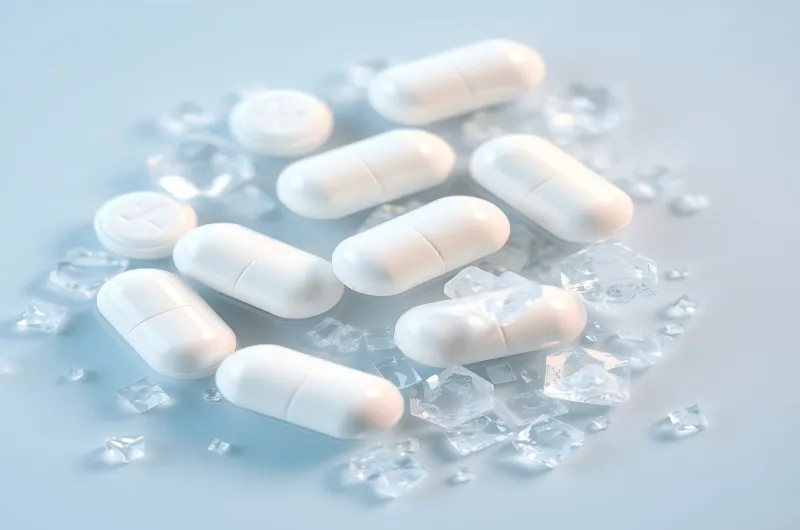BY  GENN
GENN
2024/10
Blog
What Are The 3 Uses Of Silicon Dioxide?
Silicon dioxide, commonly known as silica, is a compound composed of silicon and oxygen atoms in a crystalline structure. It is one of the most abundant minerals on Earth and can be found in various forms, including quartz, sand, and glass.
Unlocking the Marvels of Silicon Dioxide in Glass Manufacturing
Glass, a material both ubiquitous and essential in our modern world, owes much of its properties to the inclusion of silicon dioxide. The glass production process, dating back thousands of years, involves melting a mixture of silica sand (silicon dioxide), soda ash, and limestone at high temperatures.
Silicon dioxide acts as a network in glassmaking, providing structural integrity and strength to the resulting material. Its ability to create a network of oxygen atoms bonded to silicon atoms gives the glass its amorphous nature and transparency.
There are various types of glass produced using silicon dioxide as a key component. One prominent example is soda-lime glass, which finds wide application in windows, containers, and everyday objects due to its durability and low cost.
Borosilicate glass is another type that contains higher levels of silicon dioxide and boron oxide. Known for its superior thermal shock resistance compared to other glasses, borosilicate glass is favored in laboratory equipment and high-end kitchenware where extreme temperature changes are common.
The Crucial Role of Silicon Dioxide in the Semiconductor Industry
Semiconductors play a pivotal role in powering our digital world, from smartphones to computers and beyond. At the heart of semiconductor devices lies silicon dioxide serving as an insulating material that separates different components on integrated circuits or transistors. This insulating layer helps prevent unintended electrical conduction between parts while allowing controlled movement of electrons when needed for circuit operation.
The purity level of silicon dioxide used in semiconductor manufacturing cannot be overstated. High-purity silicon dioxide ensures minimal impurities that could interfere with electron flow or compromise device performance.
Any defects or impurities within the oxide layer can lead to malfunctions or reduced reliability in electronic devices. As technology advances demand more complex semiconductor structures with thinner oxide layers, the quality standards for silicon dioxide continue to rise to maintain optimal performance.
Silicon Dioxide
In the realm of food production and pharmaceuticals, silicon dioxide plays a critical role as an anti-caking agent—a silent hero behind the scenes ensuring product quality and consumer satisfaction. Powdered food products like spices or instant coffee often clump together due to moisture absorption during storage or transport. Silicon dioxide’s hydrophobic nature enables it to absorb excess moisture from these powders without altering their taste or texture.
Regulatory bodies around the world have approved the use of silicon dioxide as an anti-caking agent in food products after extensive safety evaluations. While it effectively prevents clumping by creating space between particles through electrostatic charge repulsion, manufacturers must adhere strictly to permissible limits set by authorities such as the FDA or EFSA regarding its concentration levels in consumables for human consumption.
Lesser-Known Uses of Silicon Dioxide
- Cosmetics and Personal Care Products
When it comes to cosmetics and personal care products, silicon dioxide plays a crucial role as a versatile ingredient. Known for its thickening and stabilizing properties, this remarkable compound finds its way into a wide range of creams, lotions, and powders.
By acting as a thickening agent, silicon dioxide enhances the texture of cosmetic formulations, providing that luxurious feel we associate with high-quality products. Moreover, this ingredient improves spreadability, ensuring smooth application and even coverage on the skin.
Another advantage lies in its ability to extend the shelf life of cosmetic products by preventing moisture absorption and product degradation. However, it is essential to address potential concerns related to nanoparticle-sized silica particles used in some cosmetic formulations.
While these particles offer unique benefits such as enhanced light scattering properties or improved UV protection when formulated correctly, they also raise questions about their safety profile. The toxicity of nanoparticles remains an ongoing area of research within the scientific community.
Regulatory bodies closely monitor their use in cosmetics to ensure consumer safety. It is important for manufacturers to conduct thorough assessments before incorporating nanoparticle-sized silica particles into their formulations to mitigate any potential health risks.
- Environmental Applications
Beyond its industrial uses and presence in everyday consumer goods, silicon dioxide finds surprising applications in environmental preservation efforts. One such application is through the use of silica gel as a desiccant—a substance that absorbs moisture from air or surrounding environments—in various industries. Silica gel’s exceptional absorbent properties make it ideal for controlling humidity levels during shipping and storage processes for sensitive goods like electronics or pharmaceuticals.
By reducing moisture content within packaging or confined spaces, silica gel helps prevent damage caused by humidity-induced corrosion or mold growth. Furthermore, silica gel plays an essential role in preserving valuable historical artifacts or documents by preventing moisture-related deterioration.
Museums utilize hermetically sealed display cases containing packets of silica gel which actively absorb excess moisture from the enclosed environment while maintaining optimal humidity levels. This lesser-known application highlights how silicon dioxide contributes not only to technological advancements but also to protecting our cultural heritage and preserving valuable items for future generations.










